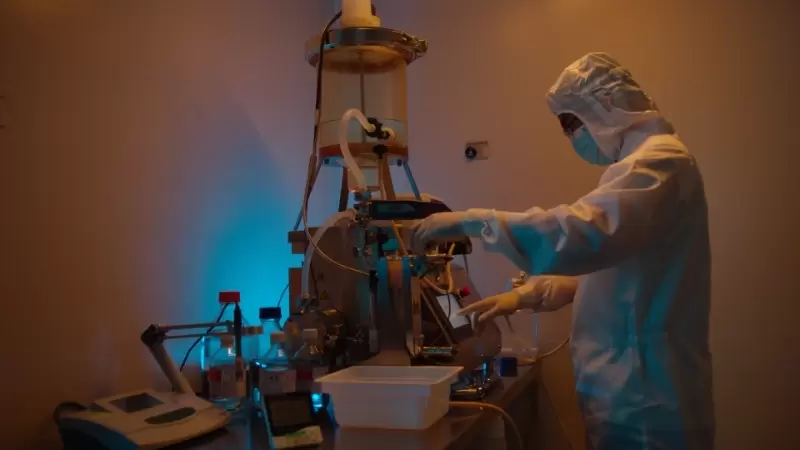 Article source:Kexing Biopharm
Article source:Kexing Biopharm Jan 02,2025
Jan 02,2025 View:
3056
View:
3056 In the field of bioengineering, protein design has always been a challenging task. With the rapid development of artificial intelligence (AI) technology, especially the breakthroughs in deep learning algorithms, AI-driven protein design is sparking a revolution. This article will provide a comprehensive introduction to the latest applications and progress of AI in protein design, discussing the current status and future prospects of this cutting-edge field.
Protein structure prediction is the foundation and prerequisite for protein design. For a long time, scientists have been working hard to overcome this challenge. In 2021, the AlphaFold 2 model developed by DeepMind made a breakthrough in protein structure prediction, achieving atomic-level prediction accuracy. This achievement was rated as one of the top ten scientific breakthroughs of 2021 by Science magazine.
AlphaFold 2 uses deep learning methods, trained on a vast amount of protein sequence and structure data, to learn the complex relationship between amino acid sequences and three-dimensional structures. It can accurately predict the three-dimensional structure of a protein based solely on its amino acid sequence. This breakthrough opens up new possibilities for protein design.
Deep Generative Models
Deep generative models are an important method for AI-driven protein design. These models can generate entirely new protein sequences by learning the sequence and structural features of known proteins. For example, the RFpeptides project extends the structural modeling capabilities of RoseTTAFold2 and uses ProteinMPNN for sequence design, creating a peptide design pipeline that is both computationally efficient and incredibly accurate.
Language Models
In recent years, language models from the field of natural language processing have also been introduced into protein design. Researchers have found that protein sequences can be regarded as a "language," with each amino acid acting like a "word." By training on a large number of protein sequences, language models can learn the inherent rules of protein sequences. For instance, the review article "Controllable protein design with language models" published in Nature Machine Intelligence discusses in detail how to use language models for controllable protein design.

AI-driven protein design is bringing revolutionary changes to multiple fields:
Drug Discovery
AI can accelerate the drug discovery process and design more precise and efficient drug molecules. For example, the study "Accelerated antimicrobial discovery via deep generative models and molecular dynamics simulations" published in Nature Biomedical Engineering demonstrates how to use deep generative models and molecular dynamics simulations to accelerate the discovery of antimicrobial drugs.
Enzyme Engineering
AI can help design new types of enzymes with specific catalytic functions. The study "ECNet is an evolutionary context-integrated deep learning framework for protein engineering" published in Nature Communications proposes an evolutionary context-integrated deep learning framework for protein engineering, especially the design and optimization of enzymes.
Materials Science
AI-driven protein design also provides possibilities for the development of new biomaterials. For example, proteins with specific mechanical properties can be designed for use in tissue engineering or biodegradable packaging materials.
Environmental Protection
AI-driven protein design can also be applied to the field of environmental protection, such as designing proteins that can break down plastics and other pollutants to help solve environmental issues.
The prospects for AI applications in protein design are broad, as it can not only accelerate drug discovery but also promote developments in enzyme engineering, materials science, and environmental protection. For example, Kexing Biopharm focuses on key disease areas, continuously projects and develops innovative antibody drugs, promotes the optimization of its product pipeline, and uses digital methods such as AI and computer-aided drug design (CADD) to efficiently optimize drug innovation and molecular discovery pathways, obtaining multiple excellent PCC molecules with high overall drug efficacy and safety. With the continuous advancement of AI technology, we have reason to believe that AI will play an increasingly important role in the field of protein design, bringing more innovation and breakthroughs to humanity.